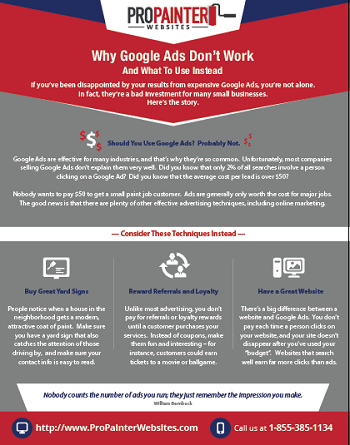Comprehending Seasonal Influences On Commercial Exterior Painting: Important Understanding For Success
Comprehending Seasonal Influences On Commercial Exterior Painting: Important Understanding For Success
Blog Article
Writer-Korsholm Skafte
When you're intending a business outside painting project, seasonal aspects can make or damage your outcomes. Read Full Report 'll intend to consider exactly how temperature and moisture influence paint application and drying times. Picking the best period can ensure your paint sticks appropriately and lasts longer. Yet which seasons are absolutely the best for this kind of work? Let's discover the crucial elements that can affect your job's success.
The Effect of Temperature on Paint Application
When you're planning an industrial external paint job, the temperature level can significantly impact exactly how well the paint sticks and dries out.
Preferably, you intend to repaint when temperature levels range in between 50 ° F and 85 ° F. If it's too cold, the paint might not treat appropriately, resulting in concerns like peeling or breaking.
On the other hand, if it's as well hot, the paint can dry out too quickly, avoiding correct adhesion and resulting in an uneven coating.
You ought to likewise think about the time of day; morning or late afternoon offers cooler temperatures, which can be a lot more desirable.
Always inspect the supplier's recommendations for the particular paint you're using, as they frequently offer assistance on the optimal temperature variety for optimal outcomes.
Humidity and Its Effect on Drying Times
Temperature level isn't the only environmental aspect that influences your industrial exterior painting project; moisture plays a substantial duty too. High humidity levels can slow down drying times considerably, impacting the overall quality of your paint work.
When the air is saturated with moisture, the paint takes longer to treat, which can lead to issues like poor bond and a greater danger of mold development. If you're repainting on a specifically moist day, be gotten ready for extended wait times between coats.
It's vital to keep an eye on local climate condition and plan appropriately. Ideally, go for humidity degrees between 40% and 70% for ideal drying out.
Keeping kitchen painting service consider mind guarantees your project remains on track and supplies a lasting finish.
Best Seasons for Commercial Exterior Painting Projects
What's the most effective time of year for your industrial outside painting jobs?
Spring and very early autumn are usually your best bets. During these periods, temperature levels are light, and humidity degrees are typically reduced, producing excellent problems for paint application and drying out.
Avoid summer's intense heat, which can trigger paint to dry also promptly, leading to poor bond and coating. In a similar way, wintertime's chilly temperatures can prevent appropriate drying and treating, risking the long life of your paint work.
Aim for days with temperatures between 50 ° F and 85 ° F for optimum outcomes. Bear in mind to check the regional weather prediction for rain, as damp conditions can spoil your project.
Preparation around these aspects ensures your paint task runs efficiently and lasts much longer.
Final thought
In conclusion, planning your industrial external paint jobs around seasonal considerations can make a substantial distinction in the outcome. By organizing job during the ideal temperature levels and humidity levels, you'll guarantee much better adhesion and drying times. Remember to keep an eye on neighborhood weather prediction and choose the right time of year-- springtime and early autumn are your best options. Taking these steps will aid you achieve a long lasting and expert surface that lasts.
